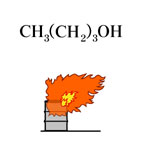| Case Name |
Sudden fire due to contamination of unexpected impurities during neutralization work at a waste water storage tank |
| Pictograph |

|
| Date |
September 19, 1992 |
| Place |
Mobara, Chiba, Japan |
| Location |
Chemical factory |
| Overview |
A fire occurred at a waste water storage tank of a plant manufacturing resin for paint. The activated carbon in the adsorption tower used to absorb organic gas generated from waste water stored heat and ignited. It ignited flammable gas in the waste water storage tank. Countermeasures such as creating an inert condition inside the adsorption tower, and detecting gas concentration in the waste water storage tank are necessary. |
| Incident |
The vapor in the gas layer of the upper part in a waste water storage tank of a plant manufacturing painting resin ignited, and there occurred a fire. |
| Processing |
Manufacture |
| Individual Process |
Waste water and waste oil treatment |
| Process Flow |
Fig2.Unit flow sheet
|
| Substance |
Butanol, Fig3 |
| Type of Accident |
Fire, explosion |
| Sequence |
On September 18th, 1992. Activated carbon was replaced at one of two adsorption towers for exhaust deodorization of a waste water storage tank.
15:18 on September 19th. A fire occurred at the waste water storage tank.
16:01. The fire was extinguished. |
| Cause |
Activated carbon in the adsorber was ignited by heat of adsorption, and it ignited flammable gas in the waste water tank. |
| Response |
Odor control for damaged waste water tank. |
| Countermeasures |
1. Strengthening the handling standard of activated carbon.
2. Nitrogen sealing of a waste water storage tank.
3. Enforcement of gas detection.
4. Installation of a frame arrester in a vent pipe of a waste water storage tank.
5. Downsizing of a waste water storage tank. |
| Knowledge Comment |
As adsorption is an exothermic reaction, sufficient attention should be paid to exothermic heat by adsorption and oxidation in the presence of oxygen when a flammable adsorbent such as activated carbon is used. |
| Background |
1. Waste water containing a small amount of organic solvent was considered to be merely water by mistake. Consequently, an increasing concentration of flammable gas in the storage tank was overlooked for a long period.. Although under the given composition and temperature of the received waste water, inflammability of the generated flammable gas was not within the flammable range, the vapor phase concentration was raised by separation of a small quantity of organic solvent and waste water as the store tank of waste water was excessively large and waste water was accumulated for a long time.
2. Neglect of the fact that adsorption is an exothermic reaction and activated carbon is flammable. New adsorbent just after replacement has high adsorption ability and might reach high temperature. |
| Incidental Discussion |
Ignorance of danger of activated carbon and waste water with a trace of organic substances. |
| Reason for Adding to DB |
A typical example of an accident caused due to heat of adsorption |
| Scenario |
| Primary Scenario
|
Poor Value Perception, Poor Safety Awareness, Inadequate Risk Recognition, Organizational Problems, Inflexible Management Structure, Insufficient Education/Training, Insufficient Analysis or Research, Insufficient Practice, Lack of Imagination, Planning and Design, Poor Planning, Poor Design, Usage, Operation/Use, Process Waste Water, Gas Accumulation during Work, Bad Event, Chemical Phenomenon, Heat Generation/ Ignition, Secondary Damage, External Damage, Fire, Loss to Organization, Economic Loss, Direct Monetary Damage 23 million yen
|
|
| Sources |
High Pressure Gas Safety Inst. of Japan. High-pressure gas protection overview. p.277(1993)
|
| Physical Damage |
The roof of a waste water storage tank was torn. Piping and the roof of the adjacent buffer tank were damaged. |
| Financial Cost |
¥ 23 million. (Accident examples of Petroleum refinery and Petrochemical units) |
| Multimedia Files |
Fig3.Chemical formula
|
| Field |
Chemicals and Plants
|
| Author |
WAKAKURA, Masahide (Kanagawa Industrial Technology Research Institute)
TAMURA, Masamitsu (Center for Risk Management and Safety Sciences, Yokohama National University)
|